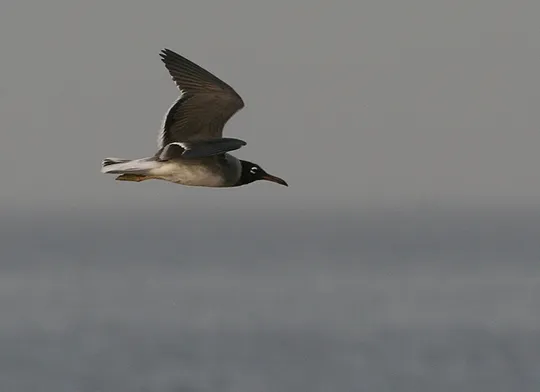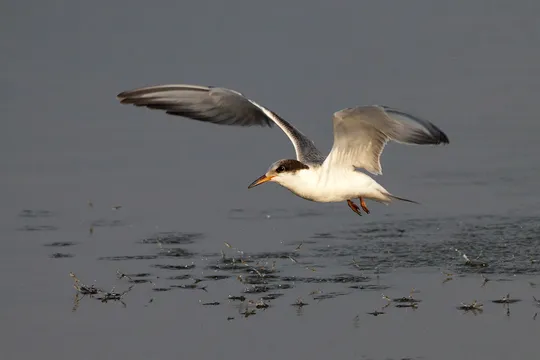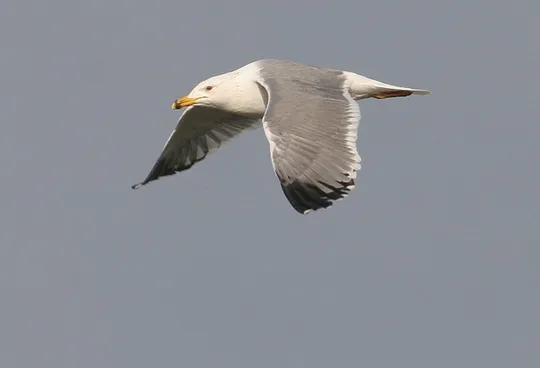YELLOW-LEGGED GULL
Larus michahellis
 Near Threatened
Near Threatened
| Habitats | Coastal Islats, Salt Ponds, Wetlands with Shallow Banks |
|---|---|
| Presence In Israel | Resident |
| Breeding In Israel | Breeder |
| Migration Types | Resident |
| Zoographical Zones | Mediterranean |
| Landscape Types | Wetlands, Fresh Water, Salt Ponds, Coastal Islats |
| Vegetation Densities | Low |
| Nest Locations | Ground |
| Diet Types | Generalist |
| Foraging Grounds | Water, Ground |
| Body Sizes | Medium (500 - 1000g) |
| Threat Factors | Unknown |
The Yellow-legged Gull is a resident breeding species found in small numbers on the northern Coastal Plain, in areas with fishponds and reservoirs close to the coast, and on small islands in the sea. In recent years the species began nesting in the Tel-Aviv Metropolitan Area as well. The estimated population in the different areas: 10-20 pairs on the Rosh HaNikra-Acre coast, 10-12 pairs on the Carmel coast, about 10 pairs in Tel-Aviv and 1-3 pairs in Yavne and Ashdod.
First nesting discovered in 1951. In the 1970s and 1980s, 5-12 pairs nested on the islands opposite Rosh HaNikra and between Atlit and Ma’agan Michael (Paz 1986, Shirihai 1996).
- פז, ע. 1986. עופות. מתוך אלון, ע. (עורך), החי והצומח של ארץ ישראל. כרך 6. הוצאת משרד הביטחון, ישראל.
- Shirihai, H., 1996. The Birds of Israel. Academic Press, London.
- Symes, A. 2013. Species generation lengths. Unpublished, BirdLife International.
- Species page at Birdlife International
Current Occupancy Map
| Data Missing | Sporadic | Limited Sites | Low Density | High Density |
|---|---|---|---|---|
| 0 | 0 | 0 | 0 | 0 |
Distribution maps
The maps presented here provide visual information on the distribution of species in Israel from the past and present, and the changes in occupancy and breeding density during the comparison period. For further reading
Relative Abundance 2010-2020
Breeding density values in the current decade as determined from experts' opinion and observations from databases.
| Data Missing | Sporadic | Limited Sites | Low Density | High Density |
|---|---|---|---|---|
| 8 | 12 | 12 | 21 | 19 |
Relative Abundance 1980-1990
Density values based primarily on the book The Birds of Israel (Shirihai 1996).
| Data Missing | Sporadic | Limited Sites | Low Density | High Density |
|---|---|---|---|---|
| 5 | 14 | 14 | 17 | 22 |
Occupancy 1990-2020
The map shows differences in the species breeding distribution between the 1980's breeding map and the current weighted breeding evaluation. Negative value - species previously bred in the grid and is not presently breeding; positive value - species has not previously bred in the grid and is currently breeding.
| Data Missing | No Change | Occupancy Increase | Occupancy Decrease |
|---|---|---|---|
| 6 | 35 | 1 | 9 |
Change in Relative Abundance 1990-2020
The map shows the changes in the relative abundance of a species in each of the distribution grids between the breeding map of the 1980s and the weighted current breeding evaluation. Negative values - decline in abundance; positive values - increase in abundance; zero - no change in abundance.
| 80 to 100 | 50 | 20 to 30 | No Change | 30- to 20- | 50- | 100- to 80- | Data Missing |
|---|---|---|---|---|---|---|---|
| 0 | 4 | 2 | 22 | 12 | 14 | 11 | 16 |
| Rarity | |
|---|---|
| Vulnerability | |
| Attractiveness | |
| Endemism | |
| Red number | |
| Peripherality | |
| IUCN category | |
| Threat Definition according to the red book |
 Contributed:
Contributed: 





